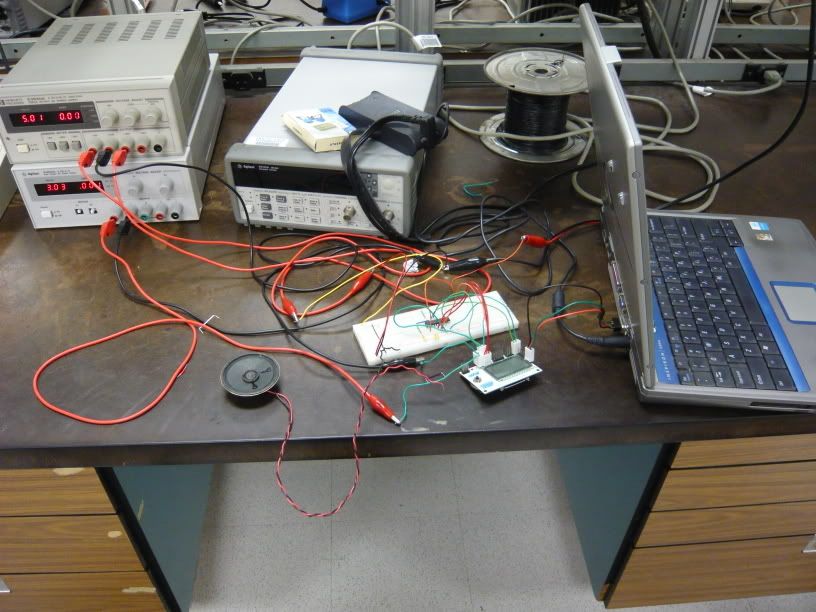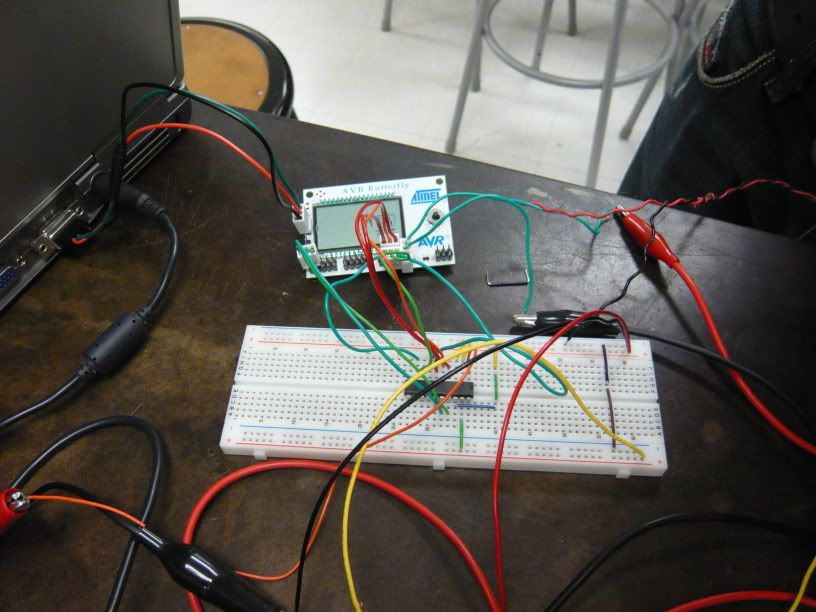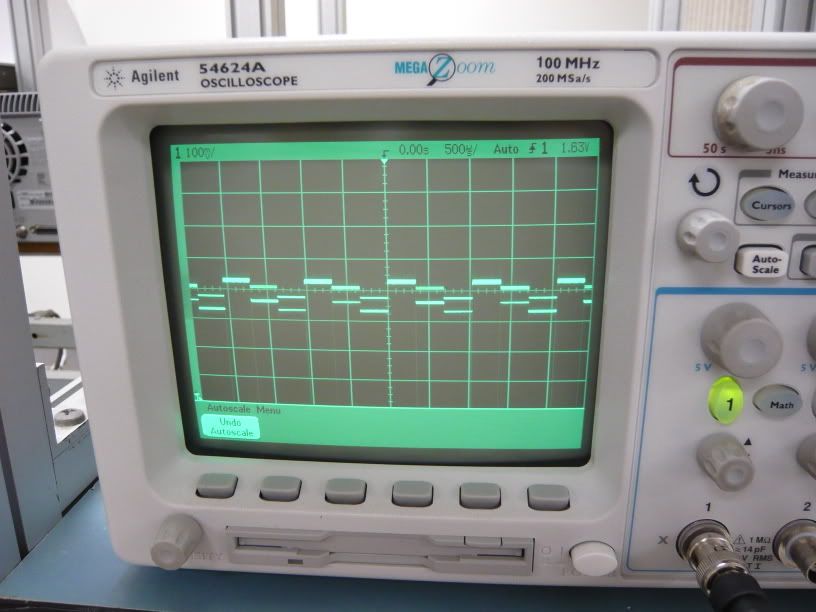First:
-Finish DAC and verify sound DONE
-Verify Serial Output of flash and verify read from it DONE USING PARALLEL OUTPUT
-Find out how to Program flash DONE AND PROGRAMMED
Second (Requires completion of first):
-verify transmission from flash memory to DAC DONE
-Figure out how to playback a music file, from flash to DAC
-includes determining sample rate BOTH DONE
Third:
-Optical Encoder integration
-Determine standard speed of O.E. at 33 1/3 RPM DONE
-Determine rotating wheel size and build wheel BUILD IN PROGRESS
-(CODE ALREADY NEAR COMPLETION) develop interrupt driven code for speed and direction, combine this with playback code CODE COMPLETE AND TESTING IN PROGRESS
*WHEN ABOVE IS COMPLETE AND TESTED, BASIC FUNCTIONALITY IS COMPLETE
Fourth:
-Implement start playback, stop playback, and reset playback (should be relatively simple assuming tasks above are complete)
Fifth (time permitting):
-Implement multiple song functionality, may be equipment prohibitive due to small size of flash memory likely to be thrown out
In addition to all of this, we have been working on determining how the overall system will be powered and possible solutions to getting 3v and 10v from a PC power supply that provides 5v and 12v. We will likely end up using a basic non-inverting op-amp circuit as we cannot determine the system's total current draw, making it difficult to determine resistor values. Also in progress is the design and construction of a box to put the system in and to mount the power and reset switches to, along with a mount that will suspend the optical encoder above the record player.
I forgot my digital camera last lab session, so I don't have video or pictures of the working prototype music player, but here is an image of the flash memory and DAC set up, (5) 4-bit counters are being used to sequentially (increasing or decreasing) address the 19 address bits in our 4MBit memory (512Kb):
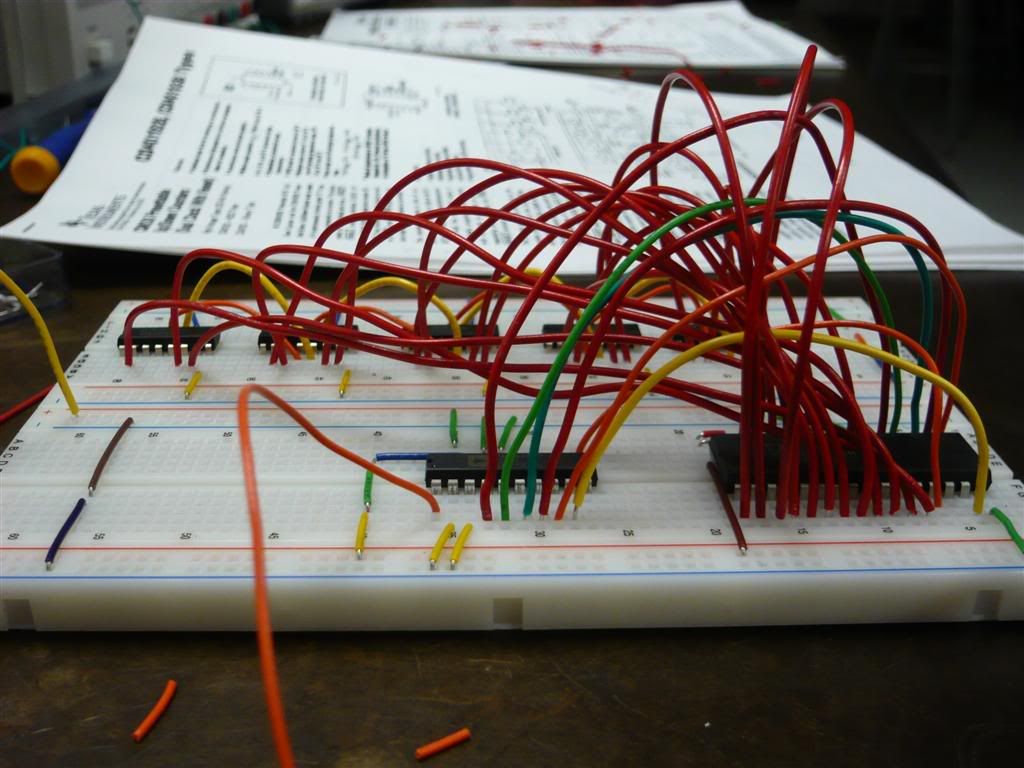
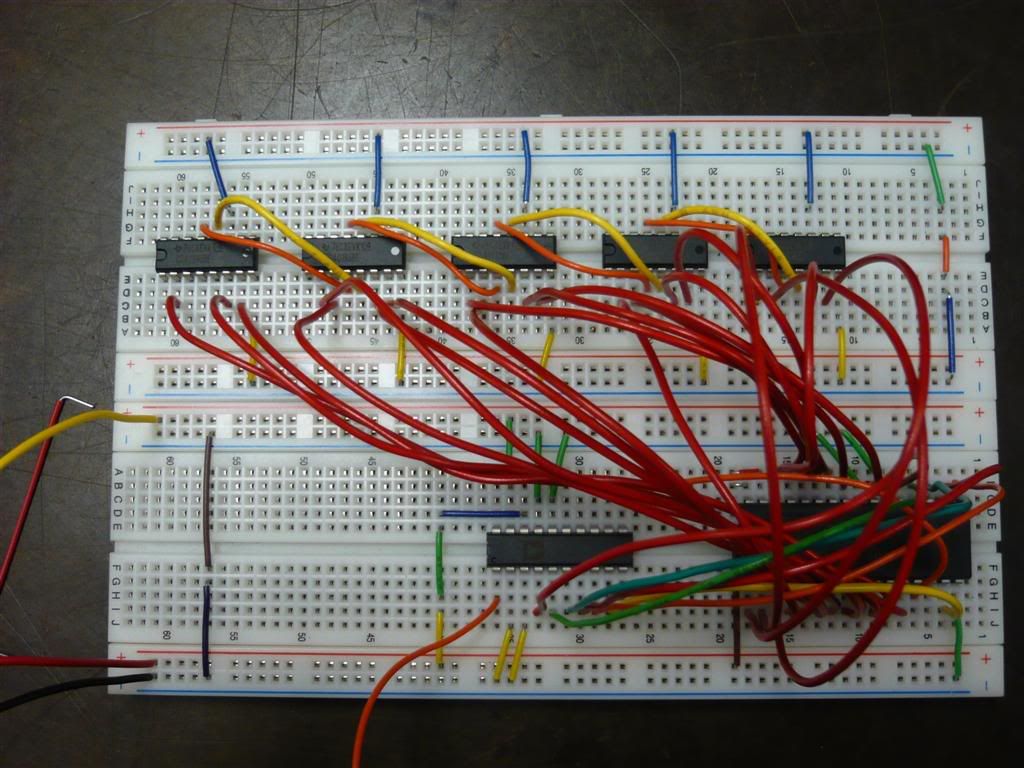
The song programmed into the memory is currently Aesop Rock's "Dinner With Blockhead," from the Float album (chosen mainly because it's ~47 seconds, the maximum length we could fit using an uncompressed 8-bit, mono, 11025Hz sample rate wav file.
More updates to follow.
